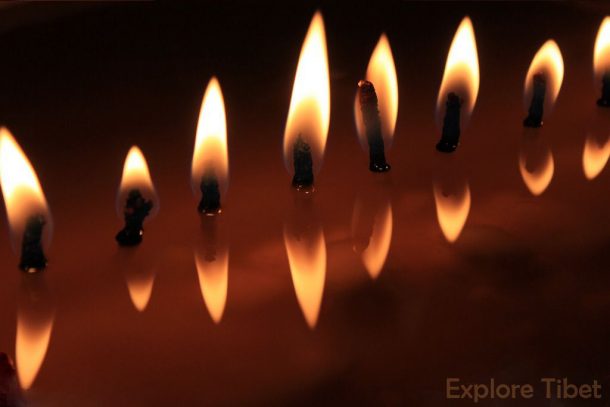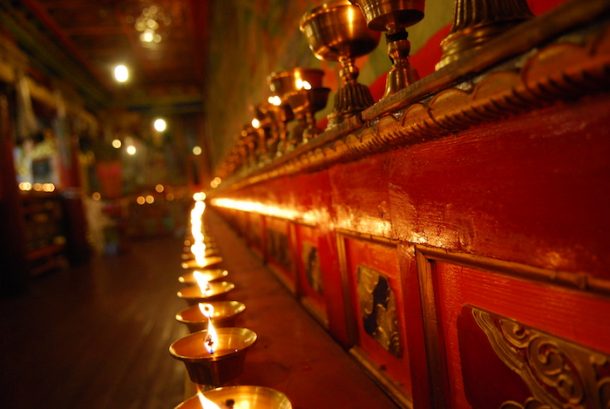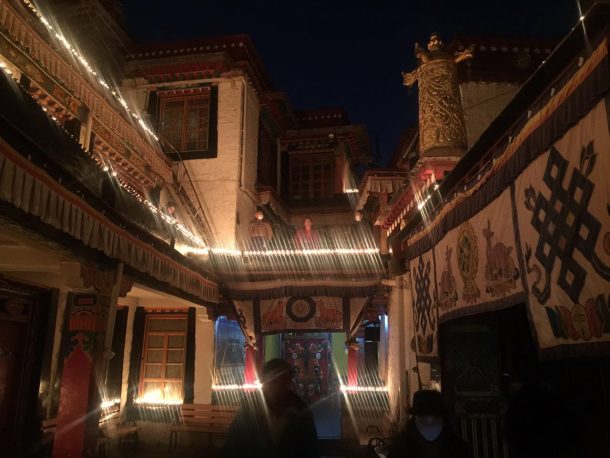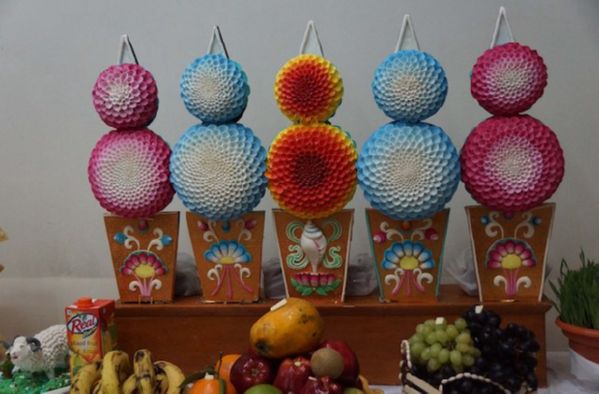Tibetan Butter Lamp
The Tibetan butter lamp burning is one of the oldest ways of offering to god and goddess. It is called Kame in Tibetan. The yak butter is used for the lamp, but these days’ people also use vegetable oil and ghee.

The butter lamp is the feature of Tibetan Buddhist temples, monasteries, and households of Tibetan Buddhist people. According to the Buddhist religion, there are many benefits of offering butter lamps at temples, monasteries, and houses. It is also used for meditation practices because it helps to focus the mind.
Table of Contents
The ten benefits of offering butter lamps
One becomes the light of the world.
One achieve clairvoyance of the pure eyes as a human
One receives the wisdom to discriminate virtue from non-virtue
One achieves the Deva’s eye
One can able to eliminate the concept of inherent existence
One receives the illumination of wisdom
One is reborn as a human or deva
One receives great enjoyment wealth
One quickly becomes liberated
One quickly attains enlightenment
“If you wish to sublime realization, offer hundreds of butter lamps,” it is said in the Root Tantra of Chakrasamvara.
Kinds of butter lamps
Material ones such as butter lamps, imaginary ones that proceed from our minds, and primordially extant things. Light is certainly one of the latter; butter one of the first. When you think that you are offering your consciousness and/or your energy along with the flame, then the lampstands for all three.

The tradition of the fire sacrifice is very ancient, even a prehistoric one. It has always represented the presence of sacred energy and the ability of human beings to manipulate it. Besides that, fire provides light which is considered pleasing to the eyes of those spiritual beings in whom the senses are predominant.
Symbols and images in Tibetan Buddhism may be examined on three (or 4) levels known as the Outer, Inner, and the Secret (also, Hidden.) We can say, therefore, that the outer meaning of the offering of butter lamps is that of one of 6 such virtues, the Perfection of generosity which we achieve by giving away the valuable substance, butter or oil. As the butter lamps burn, the smoke, visible or not, goes to Space.
The Inner meaning has to do with burning up the gross matter and transforming it into energy, thereby providing light in the darkness. Here the lamp has the further, probably universal or archetypal meaning of illuminating wisdom: That which reveals and in so doing chases away shadows and obscurations.
Every year of January 15th of Tibetan calendar host butter lamp festival, and in 1409, Tsongkhapa lit many lights to commemorate Shakyamuni’s victory in a debate in Sravasti in India about 2500 years ago. In Indian culture, debates have had greater significance than in most other cultures. Victory in important verbal debates has changed India’s history many times.

In former times, over ten thousand monks from Drepung, Sera, and Ganden monasteries gathered at the Jokhang temple for the festival. Nowadays, there are far fewer monks in attendance. In times past, the Monlam Festival in Lhasa was significant for Tibetan monks, especially from the Gelug sect of Tibetan Buddhism. The Tibetan Butter Lamp Festival is the last and greatest day of the Monlam Festival commemorating Buddha’s miracles.
During the day, people go to temples, and there are displays of sculptures made of colored butter of Buddha or animals, flowers, and birds. The sculptures are psychedelic. Then at night, thousands of butter lamps represent the light of Buddhism. The Butter Lamp Festival falls on the night of the full moon.
It is the greatest day of the Tibetan New Year holiday season that starts with the New Year Losar Festival on the first day of the month, continues with the Monlam Festival period, and ends with the Butter Lamp Festival. The colorful and intricately designed butter sculptures are called Tormas. Making these Tormas has been a tradition for hundreds of years. Now, some of the large butter sculptures tell the story of Buddha and his moral victory. Various characters in the old story are represented to instruct people on history.

Along with seeing the butter sculptures and the lights, people dance and sing in the streets. It is a festive time, and it is said to be their merriest celebration. It is sort of like a Western New Year celebration. The lights burn all night in the cold night air until the morning. It is the culmination of their winter festival and New Year festival and the climax of months of preparatory work for Tibetans.
At Kumbum monastery, they host one of the world’s most magnificent religious celebrations, which they made of the festival of butter gods in Tibet. The festival drew participants from all across Asia and continued for many days, with songs and dancing, masked theatre, a huge market, the debating of the Lamas, chanted prayers, and music accompanied by cymbals, drums, gongs, flutes, oboes, and brass trumpets up to twenty feet long. The climax of the whole celebration was the night-long display of the Butter Gods.

Immense panels of bas-reliefs representing Buddhist deities and mythical subjects had been carved in yak butter by scores of lamas, supervised by a guild of artists acclaimed as among the finest in the Buddhist world. Every year the sculptures were entirely different. The crowd surged forward to gaze at the butter figures in the flickering light of thousands of yak-butter lamps. As the night passed, the butter began to melt in the heat. By dawn, it was all over. The temporary is intrinsic to the nature of festivals. The sacred occasion had passed, and the special manifestation of the gods was finished for that year.
Recent Posts
The Perfect Tibet Tour Package
Journey to Tibet
Exploring Tibet
All Categories
- About Tibet
- book a Tibet tour
- Buddhism Practice
- Budget Tour
- China-Tibet Train
- Customized Tibet tour
- Historical Sites
- Hot Springs in Tibet
- News
- Photography in Tibet
- Tibet attraction
- Tibet Group Visa
- Tibet Motorcycle Tour
- Tibet Small Group Tours
- Tibet Tours and Tibetan Tour Guide
- Tibet Train
- Tibet Travel FAQs
- Tibet Travel Information
- Tibet Travel News
- Tibet Travel Permit Update
- Tibet Travel Prices Rises
- Tibet Trek
- Tibet Trekking Tour
- Tibet weather and climate
- Tibet Wildlife animals
- Tibet Winter Tour
- Tibetan Buddhism
- Tibetan Cultural Features
- Tibetan Culture and Poeple
- Tibetan Festivals
- What to see in Tibet



